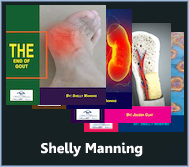Estimating the exact number of new cases of anxiety diagnosed each year in the United States is challenging due to variations in reporting practices, diagnostic criteria, and the large number of undiagnosed cases. Anxiety disorders are among the most common mental health conditions in the United States, affecting millions of adults each year.
According to data from the National Institute of Mental Health (NIMH) and the Anxiety and Depression Association of America (ADAA):
- Prevalence: Anxiety disorders affect approximately 31.1% of U.S. adults at some point in their lives.
- Specific Disorders: Common anxiety disorders include generalized anxiety disorder (GAD), panic disorder, social anxiety disorder (social phobia), specific phobias, and others.
- Onset: Anxiety disorders can develop at any age, but they often begin in childhood, adolescence, or early adulthood. However, they can also occur later in life.
- Impact: Anxiety disorders can significantly impair daily functioning, relationships, and overall quality of life if left untreated. They are associated with increased risk of other mental health conditions, substance abuse, and physical health problems.
- Treatment: Effective treatments for anxiety disorders are available, including psychotherapy (such as cognitive-behavioral therapy), medication (such as antidepressants or anti-anxiety medications), and lifestyle modifications (such as stress management techniques and exercise).
While specific data on the number of new cases of anxiety diagnosed annually may not be readily available, the prevalence and impact of anxiety disorders underscore the importance of early detection, proper diagnosis, and timely intervention. If individuals experience persistent or excessive worry, fear, or anxiety that interferes with daily life, it’s essential for them to seek help from a mental health professional for evaluation and treatment. Early intervention can lead to better outcomes and improved quality of life for individuals living with anxiety disorders.





